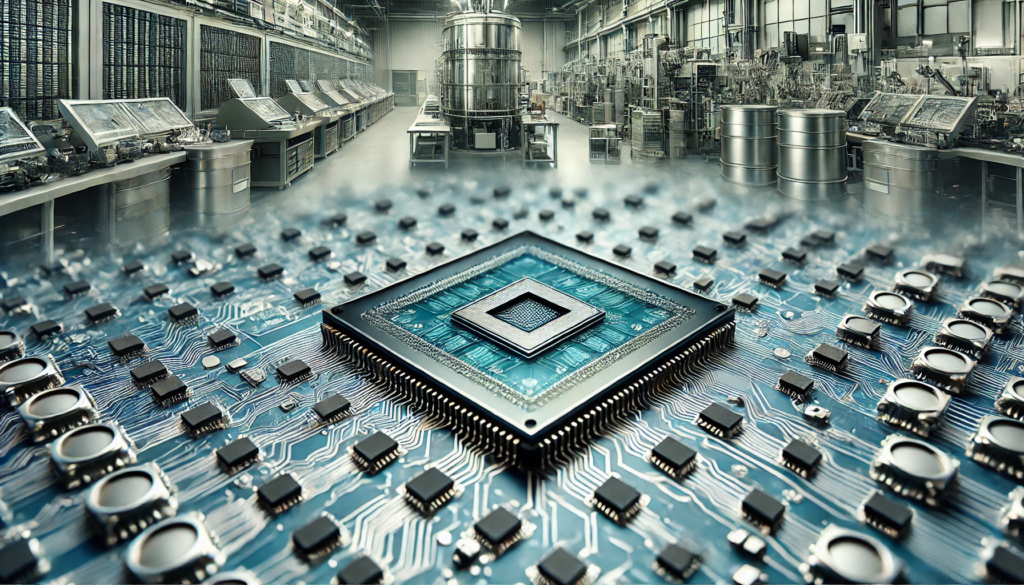Introduction to Semiconductors
Semiconductors are the unsung heroes of the modern technological world. These materials, essential in the creation of electronic devices, have revolutionized how we live, work, and communicate. From smartphones to computers, and from solar cells to LEDs, semiconductors are at the heart of numerous devices that drive our daily lives.
What are Semiconductors?
Semiconductors are materials with electrical conductivity between that of a conductor and an insulator. This unique property allows them to control electrical current, making them indispensable in the production of electronic components. Silicon is the most widely used semiconductor material due to its abundant availability and excellent electronic properties.
Types of Semiconductors
- Intrinsic Semiconductors: These are pure semiconductors without any significant impurities. Silicon and germanium are common examples.
- Extrinsic Semiconductors: These semiconductors are doped with impurities to enhance their electrical conductivity. Depending on the type of impurity added, extrinsic semiconductors can be classified into:
- N-type Semiconductors: Doped with elements that have more electrons than the semiconductor material, resulting in more free electrons.
- P-type Semiconductors: Doped with elements that have fewer electrons, creating holes or the absence of electrons.

The Role of Semiconductors in Modern Electronics
Transistors
Transistors are the building blocks of modern electronic devices. They act as switches or amplifiers, controlling the flow of electrical current. Semiconductors made from silicon are used to create transistors, which are then integrated into microchips and processors.
Diodes
Diodes are components that allow current to flow in one direction only. They are used in power conversion, signal demodulation, and overvoltage protection. The most common type of diode is the PN junction diode, made from P-type and N-type semiconductors.
Integrated Circuits (ICs)
Integrated Circuits, or ICs, are complex circuits that combine multiple transistors, diodes, and other components into a single chip. These chips are the brains of electronic devices, enabling everything from basic calculations to advanced processing tasks.
The Manufacturing Process of Semiconductors
The production of semiconductors involves several intricate steps, including:
- Purification of Silicon: Silicon is extracted from quartz and purified to create electronic-grade silicon.
- Crystal Growth: The purified silicon is melted and grown into single-crystal ingots.
- Wafer Production: The ingots are sliced into thin wafers, which are then polished to create a smooth surface.
- Doping: Impurities are added to the silicon wafers to create N-type or P-type semiconductors.
- Photolithography: Patterns are created on the wafers using light-sensitive materials and masks.
- Etching and Deposition: Material is selectively etched away or deposited to form the desired electronic structures.
- Packaging and Testing: The completed semiconductor chips are packaged and tested for functionality.

Applications of Semiconductors
Consumer Electronics
Semiconductors are integral to the functioning of consumer electronics such as smartphones, laptops, and televisions. They enable the miniaturization and enhanced performance of these devices.
Automotive Industry
Modern vehicles rely on semiconductors for various functions, including engine control, safety features, and infotainment systems. The rise of electric and autonomous vehicles has further increased the demand for advanced semiconductor components.
Telecommunications
Semiconductors power the infrastructure of telecommunications, from mobile networks to the internet. They enable high-speed data transmission and processing, essential for the digital age.
Renewable Energy
Semiconductors are crucial in the development of renewable energy technologies. Solar cells, which convert sunlight into electricity, are made from semiconductor materials. Additionally, semiconductors are used in power converters and inverters for wind and solar energy systems.
The Future of Semiconductors
The semiconductor industry continues to innovate, driven by the demand for faster, smaller, and more efficient electronic devices. Some key trends shaping the future of semiconductors include:
Advanced Materials
Researchers are exploring new semiconductor materials such as gallium nitride (GaN) and silicon carbide (SiC) that offer superior performance compared to traditional silicon. These materials are particularly promising for high-power and high-frequency applications.
Quantum Computing
Quantum computing represents the next frontier in computing technology. Semiconductors play a vital role in the development of quantum bits or qubits, which are the building blocks of quantum computers. This technology has the potential to revolutionize fields such as cryptography, optimization, and drug discovery.
Artificial Intelligence (AI)
AI and machine learning applications require immense processing power, which is provided by specialized semiconductor chips known as AI accelerators. These chips are designed to handle the parallel processing demands of AI algorithms, enabling faster and more efficient computations.
Internet of Things (IoT)
The IoT ecosystem, comprising billions of connected devices, relies heavily on semiconductors for sensors, processors, and communication modules. The continuous advancement of semiconductor technology is critical for the growth and development of IoT applications.
Conclusion
Semiconductors are the backbone of modern electronics, driving innovation and technological advancements across various industries. From consumer electronics to renewable energy, and from automotive to telecommunications, the impact of semiconductors is profound and far-reaching. As technology continues to evolve, the semiconductor industry will remain at the forefront, enabling the next generation of electronic devices and systems.

